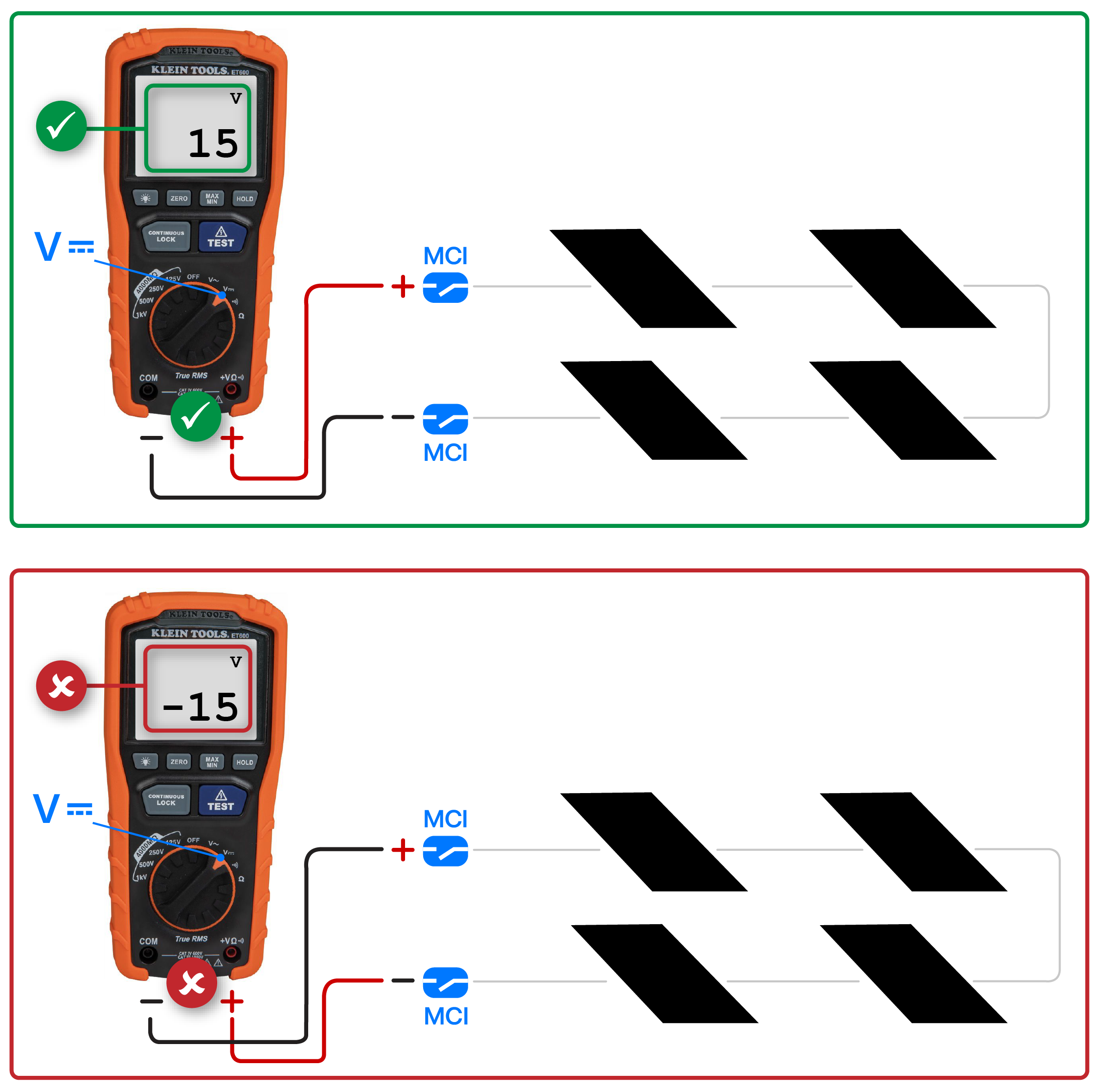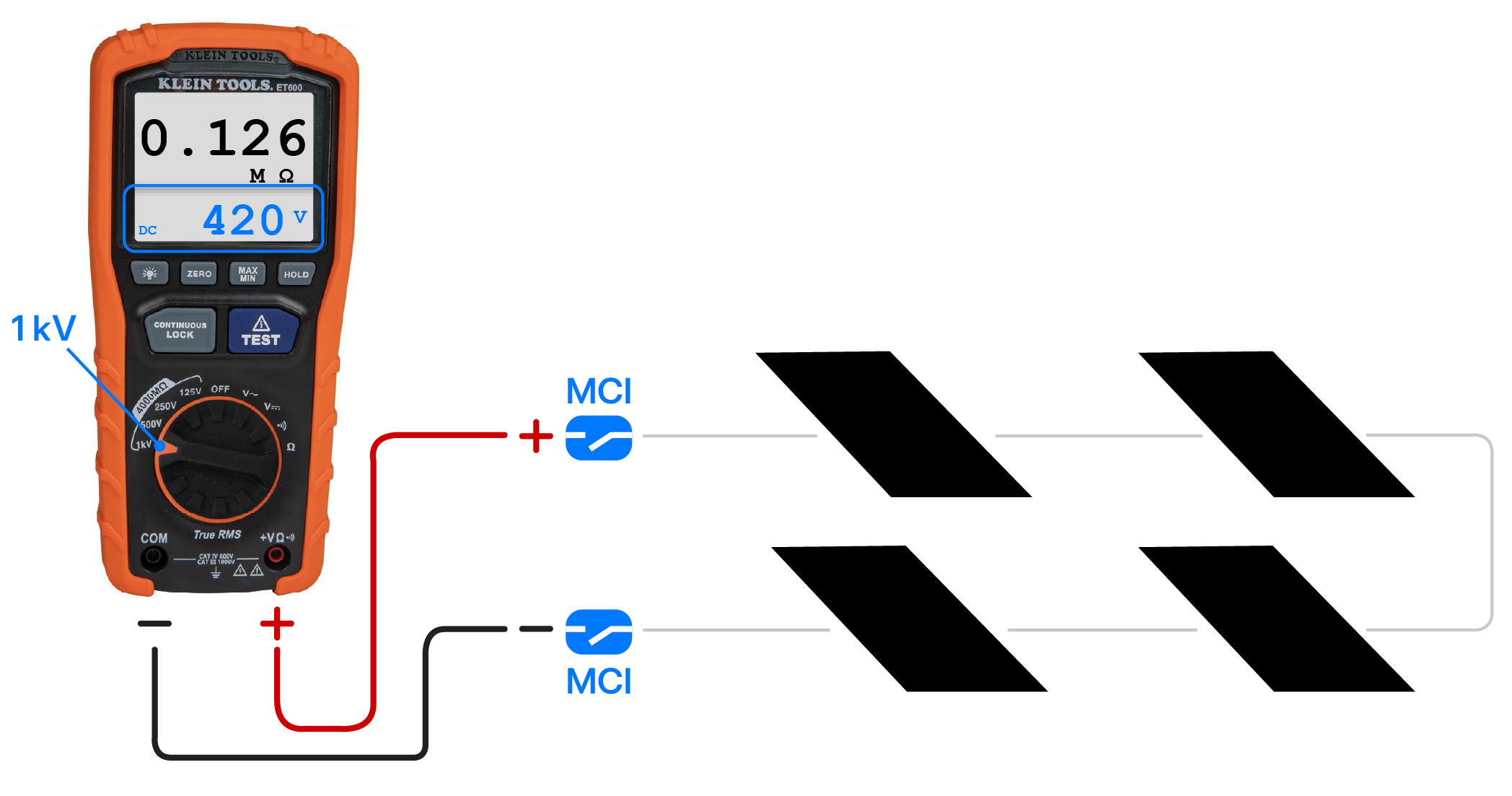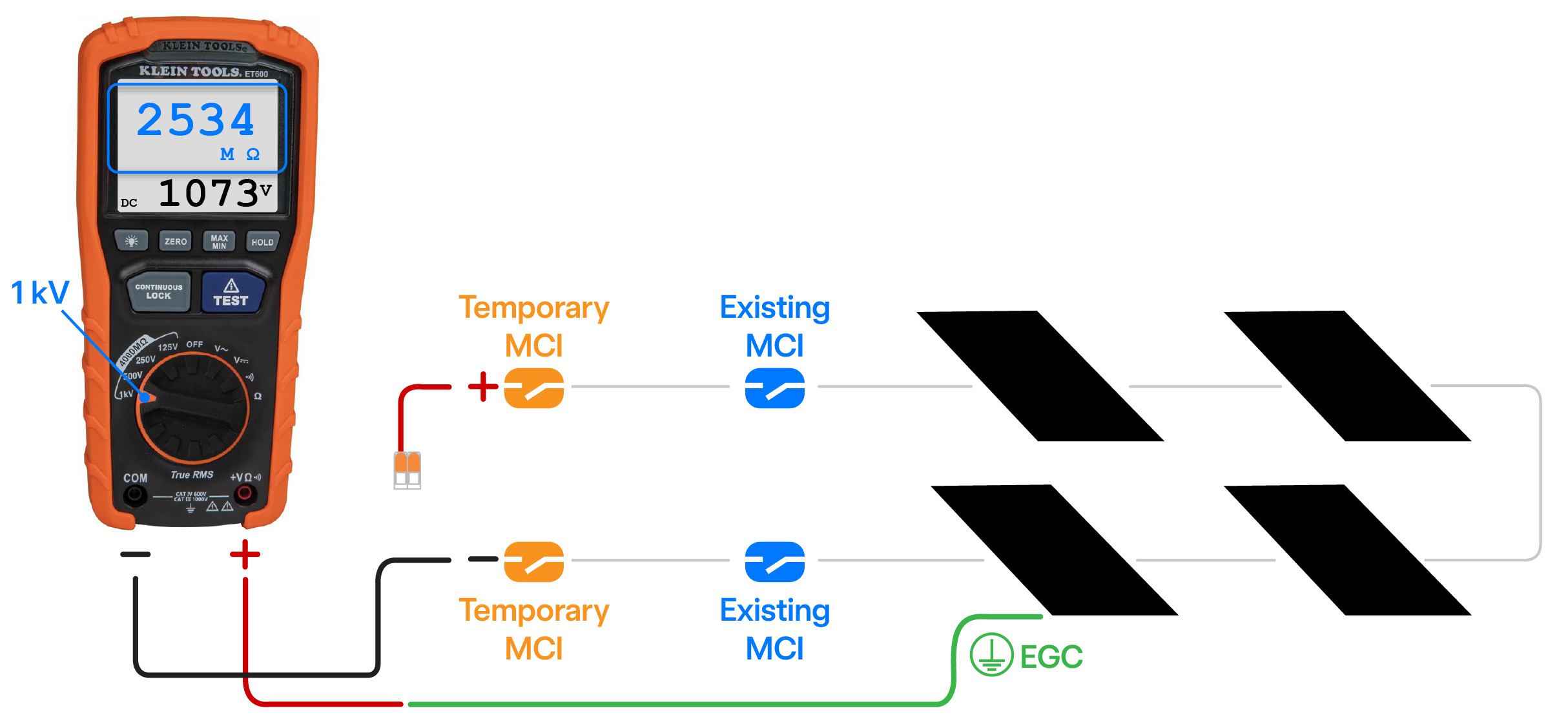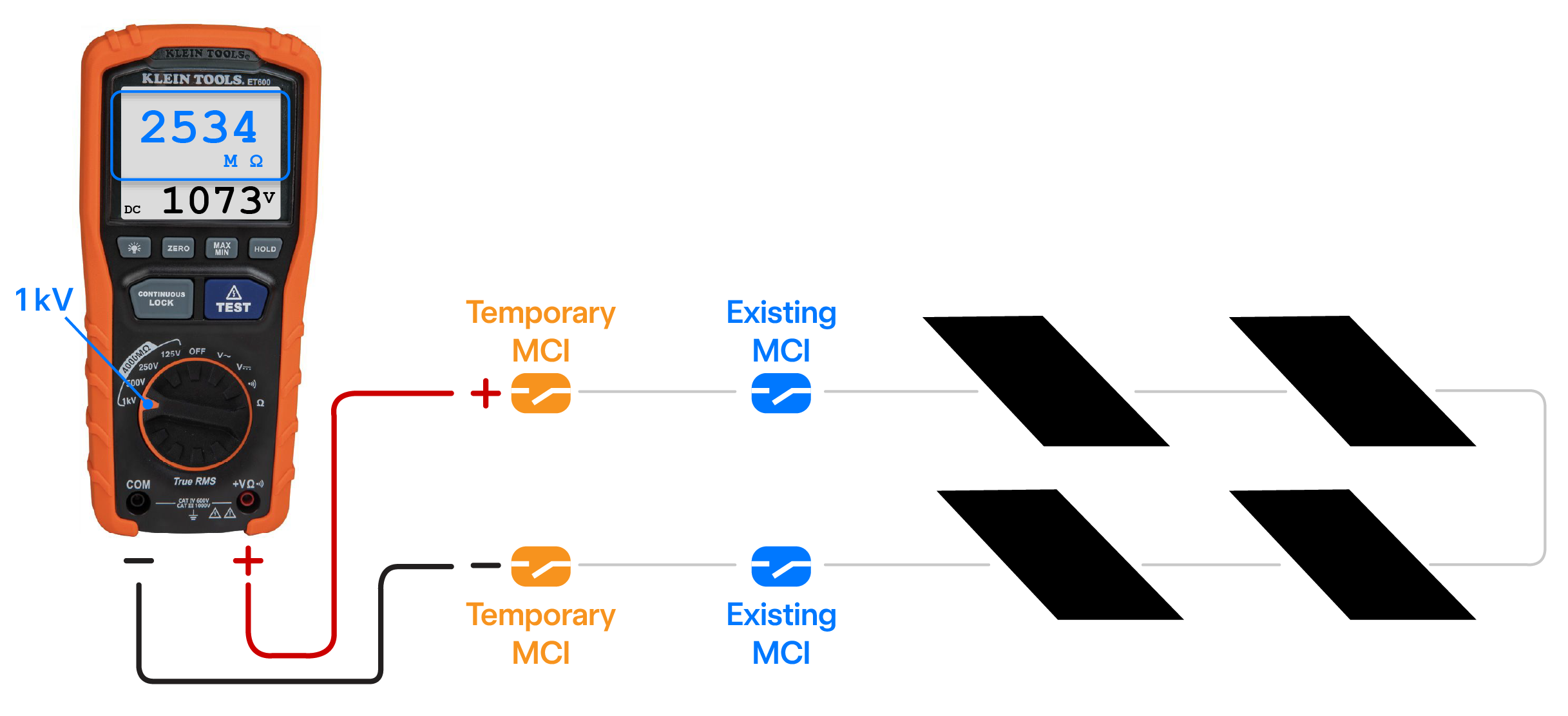Test PV Strings with MCIs
The following tests are performed on each PV string to confirm the PV wiring has been
installed correctly and the array is functioning as expected:
- Verify PV String Polarity: Confirms all PV strings have been connected correctly, e.g. no positive and negative conductors are swapped
- Verify String Voltage: Confirms the expected voltage is being produced, meaning all PV modules are connected and functioning as expected
- Perform Insulation Resistance Test: Confirms there are no damaged wires or ground faults in the array
Warning
Before connecting or
disconnecting any PV strings:
- Ensure the Powerwall 3 Enable switch is turned OFF.
- Ensure Powerwall 3 is not connected to AC power.
- If an external PV disconnect means is available, open the external PV disconnect switch.
- Ensure that there is no voltage on the PV inputs of Powerwall 3.
Note
For each of the following tests,
ensure the tester leads are connected to the correct conductor as described in the
test instructions. If the polarity is swapped, for instance if the negative tester
lead is connected to the positive conductor, the test results will be
incorrect.
Required Tools
- Standard DC voltage meter
- Insulation Resistance tester (Tesla recommends the Klein ET600 tester)
Verify PV String Polarity
Required Tools:
- Standard DC voltage meter or Insulation Resistance tester (Tesla recommends the Klein ET600 tester)
Testing Procedure:
- Set the voltage meter to DC test mode.
- Connect the voltage meter positive lead to the string's positive conductor.
- Connect the voltage meter negative lead to the string's negative conductor.
- On the voltage meter, push the TEST button.
- Confirm the result is a positive number. If the number is negative, string
polarity has been swapped.NoteThe voltage meter test result will not reflect the actual expected string voltage because there are MCIs installed in the string.
In the following diagram, the top image displays a multimeter correctly connected to the positive and negative leads in the PV array, resulting in a positive voltage (though this is NOT the string voltage). The bottom image displays an array where the positive and negative PV leads are swapped, resulting in a negative voltage test result. Correct the meter probe polarity and test again.

Note
The diagrams above illustrate example PV stringing configurations; the number
of MCIs and where they are installed in the string varies by installation
configuration.
Verify String Voltage
Required Tools:
- Insulation Resistance tester (Tesla recommends the Klein ET600 tester)
Testing Procedure:
- Set the voltage meter to 1kV test mode.
- Connect the voltage meter positive lead to the string's positive conductor.
- Connect the voltage meter negative lead to the string's negative conductor.
- On the voltage meter, push the TEST button.
- Confirm the DC voltage result
is equal to (or nearly equal to) the expected voltage per the system planset
(it may not be the exact voltage).
- If the DC voltage is significantly lower than the expected voltage, there is likely a wiring error.
- If the DC voltage is significantly higher than the expected voltage, there is likely an open circuit.
Note
If the difference in DC voltage is an increment of the panel voltage, the
string may be missing panels (voltage is too low) or have too many panels
connected (voltage is too high). For instance, if the expected DC voltage for a
system with 40V panels is 420V, but the test result is 380V, the string may be
missing (1) PV panel.

Note
The diagram above illustrates example PV stringing configurations; the number
of MCIs and where they are installed in the string varies by installation
configuration.
Perform Insulation Resistance Test
Required Tools:
- Insulation Resistance tester (Tesla recommends the Klein ET600 tester)
- (2) extra MCIs
Testing Procedure:
- Temporarily connect the (2) extra MCIs to the string to test for ground faults:
- Set the voltage meter to 1kV test mode.
- Test positive to Ground
 :
:- Connect the voltage meter positive lead to the string's positive conductor.
- Connect the voltage meter negative lead to the string's equipment grounding conductor (EGC).
- Insulate and protect
the string's negative conductor, as it is live and is not being
tested during this step.

- On the voltage meter, push the TEST button.
- Confirm the resistance value is greater than 1 MΩ. If the value is less than 1 MΩ, there is likely a damaged wire and/or ground fault in the system. Look for nicked or pinched wires, improper field-made connectors or improper crimps, or evidence of damaged modules that need to be replaced.
- Test negative to Ground
 :
:- Connect the voltage meter negative lead to the string's negative conductor.
- Connect the voltage meter positive lead to the string's equipment grounding conductor (EGC).
- Insulate and protect
the string's positive conductor, as it is live and is not being
tested during this step.

- On the voltage meter, push the TEST button.
- Confirm the resistance value is greater than 1 MΩ. If the value is less than 1 MΩ, there is likely a damaged wire and/or ground fault in the system. Look for nicked or pinched wires, improper field-made connectors or improper crimps, or evidence of damaged modules that need to be replaced.
Note
The diagrams above illustrate example PV stringing configurations; the number
of MCIs and where they are installed in the string varies by installation
configuration.

